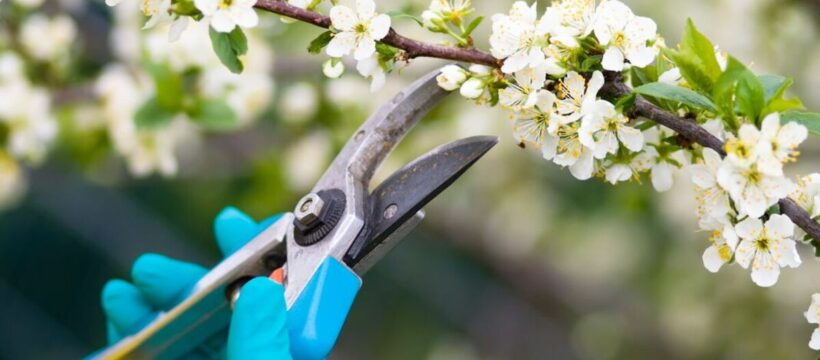Wisteria: Expert shows how to prune plant in summer months
Pruning is one of the key parts of creating and maintaining a gorgeous garden.
However, many gardeners avoid pruning due to a lack of confidence or not really understanding how to prune.
There are two reasons gardeners would need the prune a plant – the first being to improve the overall appearance and health.
Experts at Garden Centre Guide said: “Pruning is an essential horticultural practice that helps to maintain the health, appearance, and structure of your plants.
“It also helps to improve the flow of sap, remove diseased or damaged branches, and encourage the growth of new shoots.”
READ MORE: ‘Essential’ garden job to ensure tomato plants produce a ‘more bountiful crop’
The second reason is to control the size of the plant. The experts explained: “Pruning can also be beneficial in controlling the size and shape of plants, especially those that are taking up too much space or are becoming too tall.
“This not only makes your garden look neater but also ensures that the plants get enough sunlight, air, and water to grow properly.”
Gardeners will need to know what variety of plants they are pruning and the purpose of it for them to prune them at the “best time”.
For example, evergreens should be pruned in late spring or early summer, while deciduous trees should be pruned in late winter or early spring.
Don’t miss…
‘Incredibly dangerous’ gardening mistake to avoid – can result in ‘plant death’[EXPERT]
Gardener’s top five vegetables to plant by August that require ‘minimal effort’[INSIGHT]
‘Precise’ area lavender plants need pruning – ‘crucial’ for ‘healthy growth’[TIPS]
We use your sign-up to provide content in ways you’ve consented to and to improve our understanding of you. This may include adverts from us and 3rd parties based on our understanding. You can unsubscribe at any time. More info
To make pruning seem simple, the experts at Garden Centre Guides have shared five steps gardeners “need to follow” to prune plants “correctly”.
The first step is to start by identifying the plants that need pruning and what their purpose is. Once that is sorted, the main and secondary (the ones that grow from the main ones) branches need to be located for the second step.
The third step on the list is to identify and remove any “dead, diseased, or damaged branches”, as well as any shoots that are crossing or growing too closely together.
Cut back the remaining branches to the desired length, making sure to cut just above a bud that faces in the direction gardeners want the new growth to occur for the fourth step. Last but not least, the fifth step is to just repeat the process for each plant that needs to be pruned.
While those steps can seem simple, gardeners do need to “avoid common mistakes”. One of which is pruning at the wrong time. As mentioned earlier, the best time to prune plants depends on their type and the purpose of pruning. The experts said: “Pruning at the wrong time can damage your plants and affect their growth.”
Pruning too much or too little can also have a negative effect. Over-pruning can “reduce the plant’s energy reserves” and “cause stunted growth,” while under-pruning can result in an “overgrown and messy-looking garden”.
Improper cuts can “cause damage” to the plant’s growth buds and leave it “vulnerable to diseases and pests”.
It is also a mistake to not sterilise pruning tools as this can “spread diseases” from one plant to another.
Source: Read Full Article



